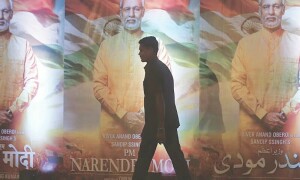As the traditional art world transitions to the digital platform, through a bewildering array of technical devices and computer softwares, we are reminded again that change is the only constant. The invention of tools, techniques and mediums that alter art practices is not new to the discipline. From art history, we learn that some innovations simplified art-making, others gave it radical new meanings, and most have integrated so seamlessly into modern consciousness that it is hard to imagine art without them.
The humble oil paint tube was a little wonder that restructured the painterly process and enabled mass production of paints. Formerly, pigments were placed around artists’ indoor workspaces in syringes or glass jars. Prone to accidental spillages, they also dried out easily. The other option was storage in pigs’ bladders, sealed with string. A hole was poked in the pig’s bladder and paint was scraped out — but because the hole could not be resealed, leftover pigment went to waste.
In 1841, an American portrait painter, John Goffe Rand, invented metallic collapsible tubes, giving paints a new life. The tube increased the pigments’ longevity, was cleaner and easier to handle, and paints were now portable. They could also be applied in thick strokes straight from the nozzle. This was hugely advantageous for the Impressionists, because they painted en plien air, often using small dotted or slashed strokes to create the shimmering effects of sunlight. Indeed, Renoir once remarked, “Without colours in tubes… there would be no Impressionism.”

A screwable cap was added to Rand’s tube in 1904 by British chemist William Winsor. Paints could now be preserved. Pigment experts, realising that paint would not dry out, began bulk production and sale, thereby making the medium cheaper. Mass-manufactured paints now had a more even consistency and could be diluted with material such as turpentine — enabling further experimentation.
Innovations in art-making tools, techniques and mediums that alter art practices is not new to the discipline
The 18th century art world — dominated by grand disciplines such as drawing, painting and sculpture — grudgingly acknowledged photography as a new art genre when artists began playing with the camera. In the early 1800s, two Frenchmen, Nicephore Niepce and Louis Daguerre, experimented with the camera obscura theory of projecting images through a pinhole in a darkened room. Eventually, it was Daguerre who arrived at what would become the first commercially available photographic process: the daguerreotype.
George Eastman’s invention of rolled film in 1889, his Kodak company’s introduction of colour photography in the mid-1930s, the first Polaroid in 1947, the first autofocus camera in 1978 and the digital camera in the 1990s, were all technical developments that assisted the emergence of photography as an art form.

However, the reception of photography as an art medium was initially contentious. It was regarded as too factual and mechanical. Considered suitable for science and architecture, the immediacy of the camera image challenged the romanticism inherent in realistic art. When boundary-pushing photographers like Alfred Stieglitz of the Photo-Secession Movement stressed that the significant aspect of a photograph was not what was in front of the camera but the manipulation of the image by the artist/photographer to achieve his or her subjective vision, views began to change. This awareness also helped to raise standards of art photography. Today, cameras embedded in our cell phones and laptops have become important art tools and digital photography is revolutionising the way the public takes and consumes images.
New devices like 3D printers that construct three-dimensional objects from digital 3D models or tools, such as 3D pens that draw in the air, digital pencils, tablets and use of lasers as the new brush strokes for computer art, appeared to be audacious inventions initially, but are now being used freely to create art. This change is inevitable because art is essentially a reflection of the times in which it is produced.
Published in Dawn, EOS, July 26th, 2020

















































Dear visitor, the comments section is undergoing an overhaul and will return soon.